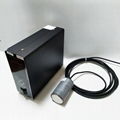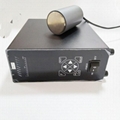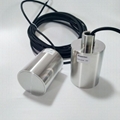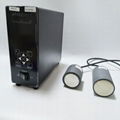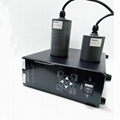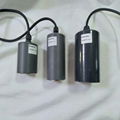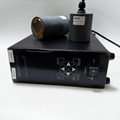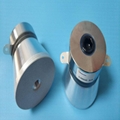| Model: | - |
|---|---|
| Brand: | Ginpertec |
| Origin: | Made In China |
| Category: | Industrial Supplies / Environment Protection Facilities / Sewerage |
| Label: | algae remove , Ultrasonic remove , Anti-fouling |
| Price: |
US $380
/ SET
|
| Min. Order: | 1 SET |
| Last Online:02 Nov, 2024 |
Principle of removing algae by ultrasonic
When the high frequency vibration of power ultrasonic transducer acts into water, it will produce the following effects:
* Mechanical effect: ultrasonic wave causes mechanical vibration of related objects in the process of propagation.
* Thermal effect: High frequency vibration can cause the medium temperature to rise and the vibration energy is converted into heat energy.
* Cavitation effect: High frequency vibration in liquid cause alternate expansion and contraction of liquid medium, produces the positive and negative pressure alternately change, when the liquid will be torn, and local vacuum micro-bubble nucleus will be generated. Micro-bubble nucleus expand, close and oscillate instantaneously with the action of ultrasound. At a certain energy threshold value, the micro-bubble collapses and generates a shock wave of up to 1000 atmospheres and micro-jets in an instant.
*Pyrolysis and free radical effects: Water vapor produced by micro-bubble nucleus splits and chains at high temperature and high pressure to produce free radical OH. When the bubbles collapse, OH go into the water, OH is a super oxidant. For organic substance in ultrasonic field, including important life macro molecule substance such as protein and nucleic acid, chemical reactions can take place rapidly under the action of free radicals. Generally speaking, hydrophobic and volatile organic compounds can enter the cavitation bubble for pyrolysis; hydrophobic and volatile organic compounds can oxidize with OH at the gas -liquid interface of the cavatation bubble or in aqueous solution.
APPLICATIONS OF AQUATIC ILFE REPELLENT AND ALGAE REMOVAL.
Studies have shown that ultrasonic wave has the effect in the water and can obviously resist algea growth under specific conditions.
Low-frequency ultrasonic wave:low-power & low-frequency ultrasonic wave has a strong control effect on blue-green algae which are the most harmful in the water,and has a good inhibitory effect on green algae and diatoms.The removal effect of the blue-green algae with frequecy of 20~40 kHz and power density of 0.2~0.5 W/cm2 was better than that of green algae and diatoms,and that of anabaena fischeri was better than thar of microcystis.
High-frequency ultrasonic wave:when the ultrasonic frequency is 50~80kHz,the concentration of tree radicals in the water reaches a peak,and the removal rate of microcystis in the water is the highest,which indicates that oxidation is more effective in the removal of microcystis.
Operating Mode:Intermittent work is more effective,working 10 to 15 times a day,each time working 5 to 15 minutes has better inhibition effect on algae.
Studies have shown that under certain conditions,ultrasonic wave can also eliminate the aquatic organisms in the sound field an kill the eggs and larvae of aquatic organisms.
Ultrasonic parameters:when the frequency is 20~30 kHz and the power density is 0.3~0.5 W/cm2,the efficet of repelling and killing aquatic organisms,especially Marine organisms,is obvious.
Processing time is 10~30 sec.
The water temperature of 30 ℃~45℃ is best.
|
Description |
Model |
Frequancy |
Power |
|
(kHz) |
(W) |
||
|
Transducer |
GPA-8SH-3020(5*4)-D59.5*110 |
20 |
80 |
|
Transducer |
GPA-4SH-3825--D76*110 |
25 |
50 |
|
Transducer |
GPA-4SS-3528-D59.5*110 |
28 |
50 |
|
Transducer |
GPA-4SS-5028-D76*110 |
28 |
100 |
|
Transducer |
GPA-4SS-3833-D59.5*98 |
33 |
50 |
|
Transducer |
GPA-4SS-3840-D59.5*85 |
40 |
50 |
|
Transducer |
GPA-4SS-3840-D59.5*98 |
40 |
50 |
|
Transducer |
GPA-4SS-3840-D76*110 |
40 |
50 |
|
Transducer |
GPA-4SS-3045-D59.5*85 |
45 |
30 |
|
Transducer |
GPA-4SS-3045-D59.5*98 |
45 |
30 |
|
Transducer |
GPA-4AS-3050 -D59.5*85 |
50 |
30 |
|
Transducer |
GPA-4SS-3868-D59.5*98 |
68 |
50 |
